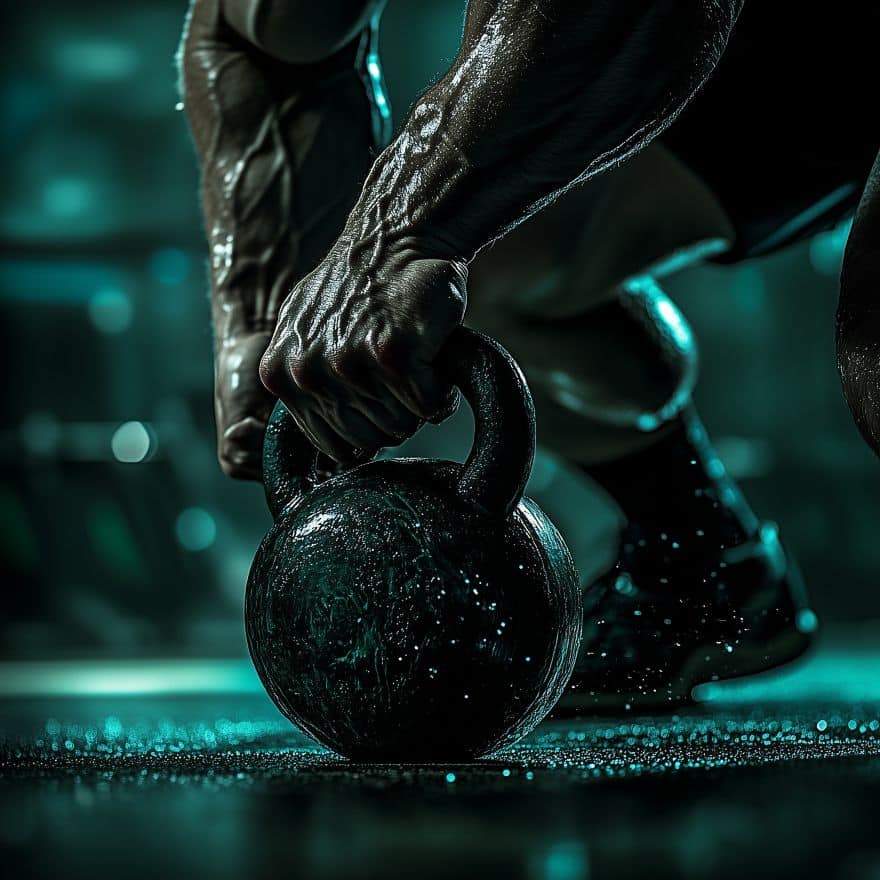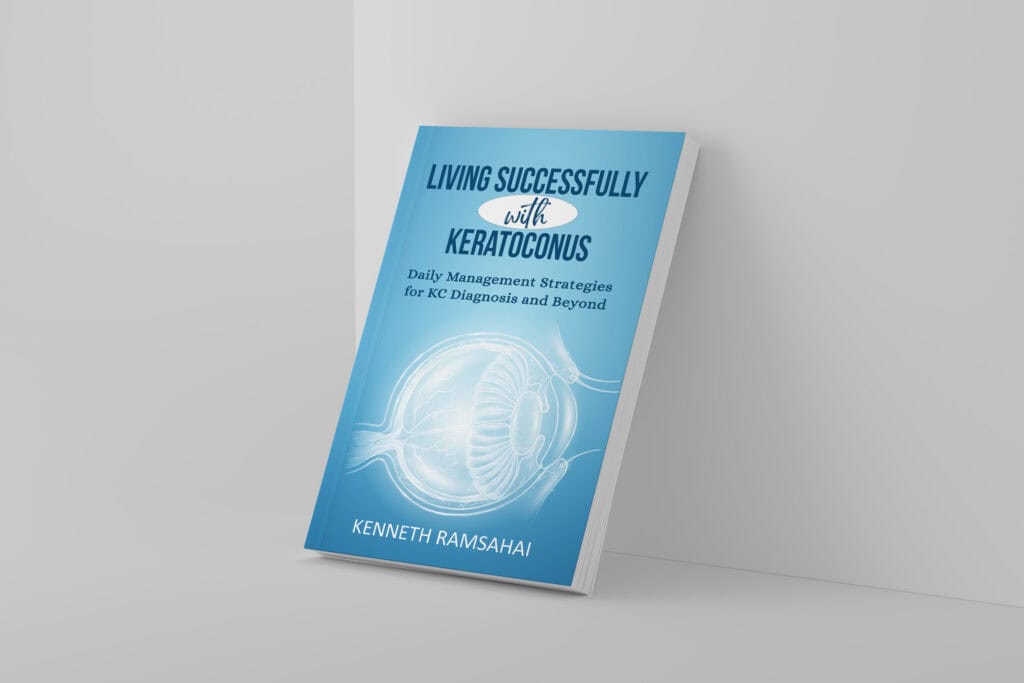
Keratoconus Exercise Techniques: Understanding Movement Adaptations
Living with keratoconus means adapting every aspect of our fitness routine to accommodate our unique visual challenges. As someone with over three decades of experience managing keratoconus while staying physically active, I’ve developed effective exercise techniques that work regardless of visual limitations.
This guide shares practical movement adaptations for keratoconus patients based on my journey as both someone living with this condition and a certified personal trainer for 10 years, during which time I also owned my own gym.
The exercise techniques I’m sharing bridge the gap between two distinct visual states many of us experience: workouts with vision correction (my “clear vision window”) and sessions with limited or uncorrected vision. I refer to the time wearing my scleral lenses as my “clear vision window” – the period each day when specialized contact lenses temporarily restore my vision clarity.
Outside this window (when my lenses are removed), my keratoconus significantly impacts my vision and spatial awareness. These adaptations have allowed me to maintain consistent fitness progress throughout my keratoconus journey.
Quick Summary: Key Exercise Adaptations for Keratoconus
For those looking for immediate guidance, here are my top exercise techniques for keratoconus:
- Proper Breathing ★★★★★ – Essential for managing intraocular pressure during exercise
- Spatial Awareness Techniques ★★★★★ – Critical adjustments for safe movement with depth perception challenges
- Vision-Based Weight Selection ★★★★☆ – Methods for choosing appropriate resistance based on your visual state
- Exercise Environment Optimization ★★★★★ – Key modifications for safety and effectiveness
How Keratoconus Uniquely Affects Exercise Performance
Before learning specific techniques, it’s crucial to understand how keratoconus fundamentally changes our relationship with physical space during workouts. Unlike many health conditions, keratoconus creates visual challenges that directly impact movement quality and safety.
The Spatial Awareness Gap Between Vision States
The most profound difference I experience between exercising with and without vision correction is in spatial orientation and body awareness. I refer to the time wearing my scleral lenses as my “clear vision window,” and outside that window, my perception of physical space dramatically transforms.
Without correction (outside my “clear vision window”):
- My awareness of body position in space becomes severely compromised
- Maintaining proper exercise form becomes significantly more challenging
- I struggle with alignment and often require tactile references (like walls or benches)
- My movements become more hesitant, cautious, and less fluid
With vision correction (in my “clear vision window”):
- I can visually monitor and correct my form through direct feedback
- My awareness of body position and alignment becomes much more precise
- Movements flow with greater confidence and coordination
- I can accurately judge distances between my body and equipment
This dramatic contrast stems from how keratoconus significantly impacts perception and spatial awareness. These vision-based differences affect every aspect of exercise, requiring specific adaptations depending on your current visual state.
Understanding the Benefits of Exercise for Keratoconus
Despite these challenges, consistent exercise offers numerous benefits specifically relevant to those of us with keratoconus. Research suggests that regular physical activity may support overall keratoconus management through several mechanisms:
- Improved cardiovascular health supports better blood flow to eye tissues
- Stress reduction may help limit eye rubbing, a known risk factor for keratoconus progression
- Enhanced body awareness helps compensate for vision-related spatial challenges
- Better overall health complements medical management of our condition
Understanding these benefits provides strong motivation to overcome the obstacles keratoconus creates in our fitness journey.
Essential Keratoconus Exercise Techniques for Safety
Now let’s explore specific techniques that make exercising with keratoconus safer and more effective, regardless of your vision correction status.
Breathing Techniques to Manage Eye Pressure
Proper breathing is perhaps the most crucial exercise technique for keratoconus patients. Specific breathing patterns significantly impact intraocular pressure (IOP), making this an essential skill for protecting eye health during workouts.
This is especially important in my case, as I have elevated ocular pressure in my right eye—the eye that received a corneal transplant—and require daily eye drops to manage this pressure.
I’ve developed specific breathing techniques for weight lifting with keratoconus that help maintain healthy eye pressure:
- Controlled Exhalation: Always exhale during the exertion phase of any movement (when lifting, pushing, or pulling against resistance)
- Avoid Breath Holding: Never hold your breath during exercise, especially during exertion, as this can significantly spike IOP
- Rhythmic Breathing Pattern: Establish a consistent breathing rhythm coordinated with your movements to maintain steady pressure
- Pressure Management: For heavier lifts, use a modified breathing technique that limits pressure increases in the eye
I practice these techniques religiously, regardless of my vision state. Eye pressure management remains equally important whether you’re exercising with perfect clarity or limited vision.
Vision-Based Weight Selection Strategies
How I select weights changes dramatically depending on my vision correction status:
For uncorrected vision:
- I choose lighter weights with higher repetitions to reduce risks from misjudging movements
- This approach compensates for reduced spatial awareness while maintaining training effectiveness
- I prioritize strict form over heavier loads
- I select weights I can control completely throughout the entire range of motion
With vision correction:
- Moderate weights become more manageable with improved visual feedback
- I can better evaluate my capacity and work closer to my strength potential
- I still avoid extremely heavy loads that might increase eye pressure
- I focus on progressive overload while maintaining strict form
My approach evolved from extreme caution with uncorrected vision to greater confidence with scleral lenses, but I never compromise form for heavier weights regardless of vision status.
Modified Movement Techniques for Different Vision States
Over years of adaptation, I’ve developed specific technique modifications that address the unique challenges of keratoconus:
Without clear vision:
- Ground-Anchored Movement: Maintain at least one point of contact with a stable surface (foot, hand, or back) throughout exercises
- Reference Point System: Establish physical touch points before beginning movements to create spatial anchors
- Range Limitation: Use physical barriers (like a bench or box) to prevent overextension of movements
- Proprioceptive Focus: Concentrate intensely on the feeling of movement rather than visual feedback
With corrected vision:
- Mirror Feedback: Position yourself to use mirrors effectively for form monitoring
- Visual Anchor Method: Establish visual reference points in your environment before beginning exercises
- Form-First Protocol: Prioritize perfect technique even when vision allows for more aggressive progression
- Controlled Advancement: Progress exercise difficulty gradually, even when vision would permit faster advancement
These modified techniques have allowed me to maintain consistent training regardless of my vision status on any given day.
Creating Optimal Exercise Environments for Keratoconus
The environment in which we exercise significantly impacts both safety and effectiveness when you have keratoconus.
Lighting Optimization for Keratoconus Exercise Safety
The lighting in my workout space dramatically affects my exercise quality and safety:
Outside my “clear vision window”: Without correction, my light sensitivity and distortion make lighting a critical factor. I require:
- Consistent, diffused light without shadows that could be misinterpreted as objects
- No direct light sources in my field of vision that might cause glare or halos
- Higher overall brightness to compensate for reduced visual acuity
- Careful elimination of reflective surfaces that might create confusing visual inputs
Within my “clear vision window”: With scleral lenses, my lighting requirements change:
- I can function in more varied lighting conditions
- I still benefit from glare reduction but can adapt to standard lighting
- I use targeted lighting to highlight specific workout areas or equipment
Lighting might seem like a minor detail, but for those of us with keratoconus, it can make the difference between a confident workout and a frustrating or even dangerous experience.
Tactile Exercise Zones for Vision-Limited Workouts
I’ve developed a system of tactile zoning in my workout space that helps me navigate safely even with severely limited vision:
- Textured Flooring: Different floor textures help identify different workout zones without needing to see them clearly
- Physical Boundaries: Foam rollers or yoga blocks create detectable boundaries around workout spaces
- Equipment Positioning: Designate specific locations for all equipment with tactile markers
- Clear Pathways: Establish unobstructed paths between exercise stations that can be followed by feel
These environmental adaptations allow for confident exercise even on days when vision is at its worst, providing consistency despite vision fluctuations.
Exercise Space Organization for Visual Impairment

How you arrange your exercise space matters significantly when you have keratoconus:
- Clear Movement Paths: Keep walking areas completely clear to prevent trips and falls
- Consistent Equipment Placement: Always return equipment to the same location for easy retrieval with limited vision
- Color Contrast: Use contrasting colors for equipment against flooring to increase visibility
- Tactile Guidance Systems: Implement textured floor mats to create boundaries around workout stations that can be felt underfoot
These organization strategies make exercise spaces navigable regardless of your vision status on any given day.
Adapting Common Exercises for Keratoconus
Let’s examine how to modify some of the most common exercises based on vision status.
Squat Modifications for Limited Vision
The squat, a fundamental movement pattern, requires significant adaptation for keratoconus:
Without clear vision:
- Position against a wall for back reference and stability
- Use a box or bench to provide tactile feedback for depth
- Focus on feeling weight distribution across the feet rather than visual alignment cues
- Consider using resistance bands instead of free weights for more consistent resistance
With vision correction:
- Position sideways to a mirror to monitor form
- Use visual markers to ensure proper depth and alignment
- Progress more confidently with barbell or dumbbell variations
- Still, maintain caution with heavier loads that might increase eye pressure
Push Movement Adaptations
Pushing exercises (like push-ups, and chest presses) can be modified for keratoconus:
Without clear vision:
- For push-ups, use a wall or elevated surface for better spatial reference
- With bench press, use a spotter or safety bars and focus on feeling the bar path
- Opt for resistance bands anchored at stable points for pressing movements
- Use tactile cues (like touching the chest) to confirm proper range of motion
With vision correction:
- Use mirrors to check alignment and form
- Progress more confidently with free weight variations
- Pay attention to proper head positioning to avoid lens displacement
- Still use safety systems (like power rack safety bars) for heavier lifts
Pull Exercise Modifications
Pulling exercises require special consideration with keratoconus:
Without clear vision:
- Anchor resistance bands at stable, consistent points
- For rows, use a bench for torso support to maintain position
- Focus on feeling the contraction in target muscles
- Use tactile reference points to guide movement patterns
With vision correction:
- Use mirrors to monitor back position and posture
- Progress to free weight variations with proper form
- Ensure proper head positioning to maintain lens comfort
- Consider protective eyewear for dynamic pulling movements
Conclusion – Exercise Consistency Despite Visual Challenges

Living with keratoconus has taught me to adapt to changing visual realities, sometimes within the same day. My approach to exercise has evolved to bridge the gap between my “clear vision window” with correction and my uncorrected state, creating consistent exercise experiences regardless of visual acuity.
The techniques outlined in this article serve both realities:
✅ Proper breathing techniques manage eye pressure regardless of vision status
✅ Modified movement patterns accommodate changing spatial awareness
✅ Environmental adaptations create safer exercise spaces
✅ Exercise modifications respect the unique challenges of keratoconus
The most valuable lesson I’ve learned is that consistency doesn’t mean doing identical workouts regardless of vision status—it means having reliable alternatives that produce similar results while accommodating the dramatic differences in spatial awareness that occur between corrected and uncorrected vision states.
Whether you’re managing with uncorrected vision, transitioning between vision correction options, or regularly moving between your own “clear vision window” and uncorrected vision like I do, these techniques will help you maintain a safe, effective exercise routine despite the challenges keratoconus presents.
I’d love to hear about your own exercise adaptations in the comments. How has keratoconus shaped your approach to physical activity?
Frequently Asked Questions About Keratoconus Exercise Techniques
Very Proud To Announce
Want to see what’s inside? Click the book cover, which is also available in audiobook format, to read a free sample on Amazon. Discover how the “Clear Vision Window” concept can transform how you manage life with keratoconus.
If you find the sample valuable, please consider purchasing the complete book. Your purchase supports the keratoconus community while giving you access to all the practical strategies I’ve developed over three decades.
If you do purchase, I’d appreciate an honest review—it helps others with keratoconus find this resource.

Disclaimer
The information in this article represents my personal experience living with keratoconus and working as a certified personal trainer.
Each person’s experience with keratoconus is unique, and what works for me may not work for everyone. Always consult with your eye care professional before beginning any new exercise program to ensure it’s appropriate for your specific condition.
Additionally, proper form and technique are essential when exercising, particularly if you have vision limitations. Consider working with a qualified fitness professional who understands your visual needs when starting a new fitness routine.